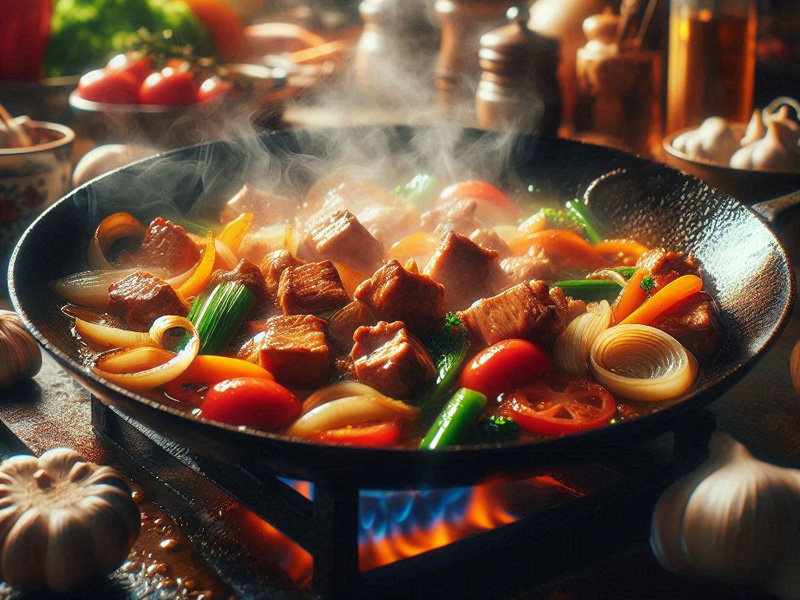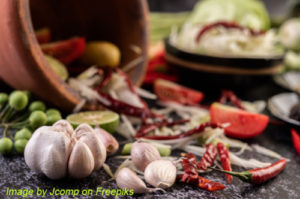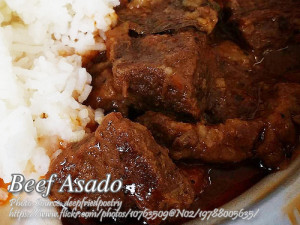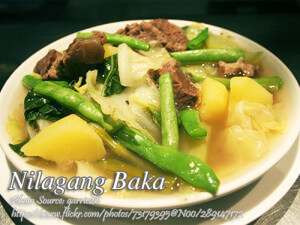Understanding the Sangkutsa Method: A Pillar of Filipino Cooking
Filipino cuisine is rich in techniques that have been passed down through generations, and one such method that holds a special place in the culinary traditions of the Philippines is sangkutsa. This technique, often referred to as “pre-cooking” or “par-cooking,” plays a crucial role in ensuring that the flavors in Filipino dishes are deep, well-rounded, and fully developed. In this article, we will explore the meaning of sangkutsa, its significance in Filipino cooking, and how it is applied in various dishes.
What is Sangkutsa?
The term sangkutsa is derived from the Filipino word “kutsa,” which translates to sautéing or stir-frying. However, sangkutsa is more than just a simple sauté; it involves an initial cooking process where ingredients, particularly meat, are partially cooked before they are fully incorporated into a dish. This technique is typically used in dishes that require long cooking times or involve multiple layers of flavors, ensuring that each component is cooked to perfection and absorbs the seasonings and spices thoroughly.
The process of sangkutsa typically begins with sautéing aromatics such as garlic, onions, and tomatoes in oil. Once the aromatics are fragrant, the main ingredient—usually meat, like pork or chicken—is added and sautéed until it is lightly browned. The dish is then cooked further, either by simmering it with broth, adding vegetables, or incorporating other ingredients to complete the recipe. The result is a dish with rich, complex flavors that are fully integrated into the meat.

The Significance of Sangkutsa in Filipino Cooking
Sangkutsa is more than just a cooking method; it is a technique that reflects the Filipino approach to food, which emphasizes patience, attention to detail, and the importance of building flavors. This method is often employed in traditional Filipino dishes that are served during special occasions or family gatherings, where the quality and depth of flavor are paramount.
The significance of sangkutsa lies in its ability to:
- Enhance Flavor: By partially cooking the meat with aromatics, sangkutsa allows the flavors to penetrate the meat more effectively. This ensures that the final dish is flavorful and aromatic, with each bite offering a burst of well-rounded taste.
- Tenderize Meat: The sangkutsa method also helps in tenderizing tougher cuts of meat. The initial cooking process breaks down the fibers in the meat, making it more tender and allowing it to absorb the flavors of the dish more readily.
- Create a Flavor Base: Sangkutsa serves as the foundation for many Filipino dishes, creating a flavor base that carries through the entire cooking process. This is particularly important in dishes that involve long cooking times, as it ensures that the flavors develop gradually and evenly.
The Role of Sangkutsa in Filipino Dishes
The sangkutsa method is employed in a wide range of Filipino dishes, each showcasing the versatility and effectiveness of this technique. Here are some popular Filipino dishes that utilize sangkutsa:
Menudo
One of the most well-known Filipino dishes that relies on sangkutsa is menudo, a hearty stew made with pork, liver, potatoes, and a medley of vegetables. The sangkutsa process begins by sautéing garlic and onions in oil, followed by browning the pork and liver. This initial step ensures that the meat is flavorful and slightly caramelized, which adds depth to the stew when it is later simmered with tomatoes and other ingredients.
Adobo
Adobo, the unofficial national dish of the Philippines, also benefits from the sangkutsa method. While there are many variations of adobo, the traditional preparation involves sautéing the meat (often chicken or pork) with garlic and onions before simmering it in a mixture of vinegar, soy sauce, and spices. This technique allows the meat to absorb the tangy and savory flavors of the marinade, resulting in a dish that is both tender and bursting with flavor.
Kare-Kare
Kare-kare, a rich and creamy stew made with oxtail, tripe, and vegetables, is another dish where sangkutsa plays a vital role. The meat is initially sautéed with aromatics to develop a deep flavor base, which is then enhanced by the addition of peanut butter, annatto, and other ingredients. The sangkutsa process ensures that the meat is tender and that the flavors meld together harmoniously, creating a luxurious dish that is often enjoyed with a side of bagoong (fermented shrimp paste).
How to Master the Sangkutsa Method
While sangkutsa may seem straightforward, mastering this technique requires a good understanding of timing, heat control, and the use of aromatics. Here are some tips to help you perfect the sangkutsa method in your own kitchen:
- Choose the Right Ingredients: The success of sangkutsa begins with selecting quality ingredients. Fresh aromatics such as garlic, onions, and tomatoes are essential for building a strong flavor base. When it comes to meat, opt for cuts that are well-suited for slow cooking, such as pork shoulder, chicken thighs, or beef chuck.
- Use the Right Pan: A heavy-bottomed pan or pot is ideal for sangkutsa, as it allows for even heat distribution and prevents the ingredients from burning. The pan should be large enough to accommodate the meat without overcrowding, ensuring that each piece is browned evenly.
- Control the Heat: Sangkutsa requires careful heat management. Start by sautéing the aromatics over medium heat to release their flavors without burning them. When adding the meat, increase the heat slightly to achieve a good sear, but be careful not to cook the meat through at this stage. The goal is to develop a rich, caramelized exterior while keeping the interior slightly undercooked.
- Be Patient: Sangkutsa is a method that rewards patience. Take your time to sauté the ingredients properly, allowing the flavors to develop fully before moving on to the next step. Rushing the process can result in a dish that lacks depth and complexity.
- Layer the Flavors: As you cook, think about how each ingredient contributes to the overall flavor profile of the dish. Sauté the aromatics first to create a strong foundation, then add the meat to build on that base. If the recipe calls for additional seasonings or spices, add them gradually to ensure that the flavors meld together seamlessly.
Variations and Modern Applications of Sangkutsa
While sangkutsa is deeply rooted in traditional Filipino cooking, it is a versatile method that can be adapted to modern culinary practices. Chefs and home cooks alike have experimented with sangkutsa, incorporating it into fusion dishes or using it to prepare contemporary versions of classic Filipino recipes.
For example, some cooks have applied the sangkutsa technique to international dishes such as stews, curries, and braises, infusing them with the flavors of Filipino cuisine. Others have experimented with different types of meat, such as lamb or seafood, to create new and innovative dishes that still retain the essence of sangkutsa.
In a more modern context, sangkutsa can also be used in meal prepping or batch cooking. The partial cooking process allows you to prepare the base of a dish ahead of time, which can then be finished later when you’re ready to eat. This makes it easier to enjoy home-cooked meals throughout the week without sacrificing flavor or quality.
Conclusion: The Timeless Art of Sangkutsa
The sangkutsa method is a cornerstone of Filipino cooking, embodying the values of patience, attention to detail, and a deep appreciation for flavor. Whether you’re preparing a traditional dish like menudo or adobo, or experimenting with new culinary creations, mastering sangkutsa will elevate your cooking and bring the rich, savory flavors of Filipino cuisine into your kitchen.
As you continue to explore the world of Filipino food, take the time to understand and appreciate the techniques that make these dishes so special. Sangkutsa is more than just a cooking method—it is a culinary tradition that connects you to the rich history and culture of the Philippines, one flavorful bite at a time.




